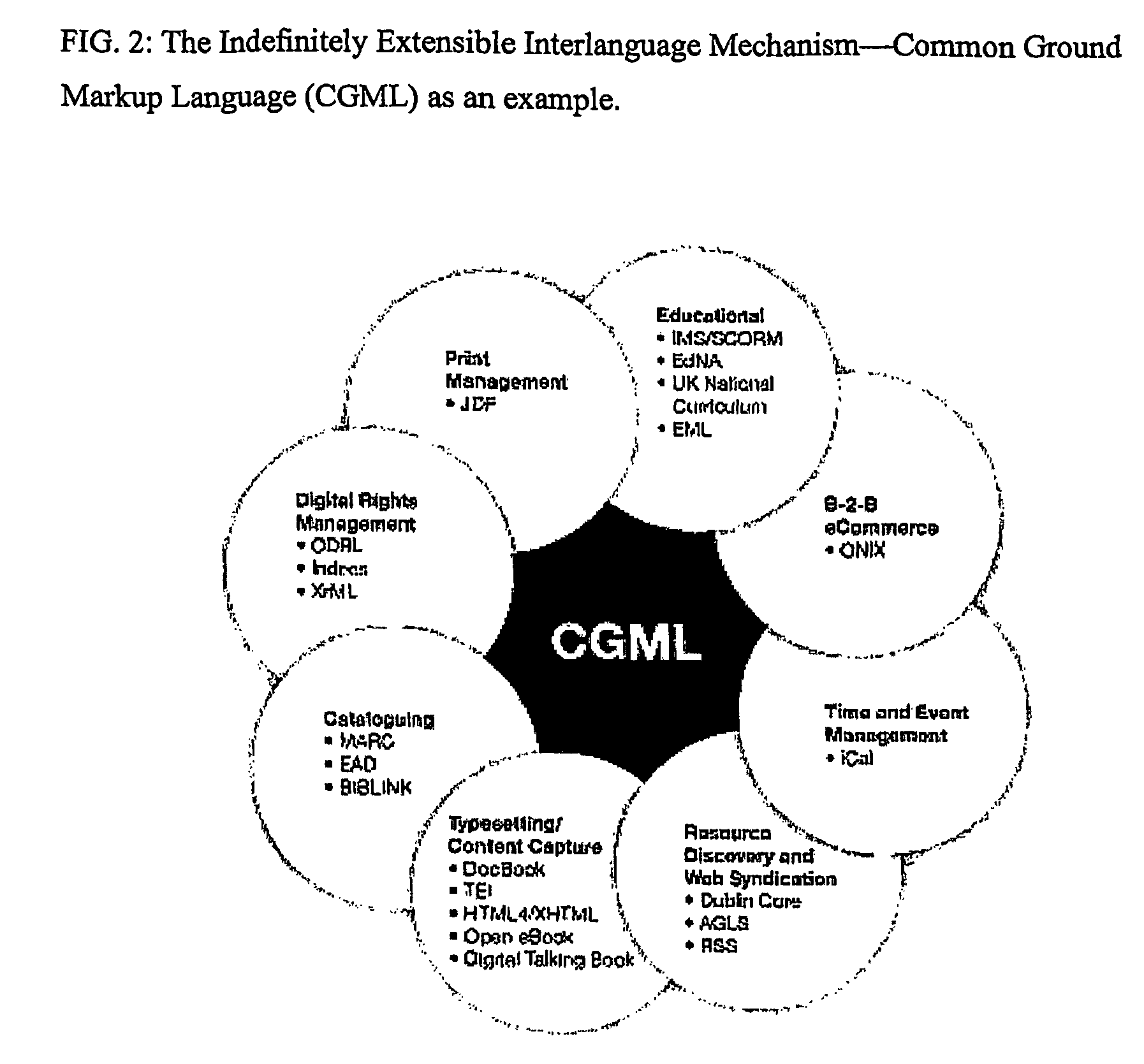Method and apparatus for the creation, location and formatting of digital content
a technology of digital content and location, applied in the direction of electric digital data processing, instruments, computing, etc., can solve the problems of limited interoperability, lack of practical or workable basis for dtd-to-dtd interoperability, and a bit of conceptual jumbl
- Summary
- Abstract
- Description
- Claims
- Application Information
AI Technical Summary
Benefits of technology
Problems solved by technology
Method used
Image
Examples
Embodiment Construction
mark-up schema, with other software schemas, even if the semantic range and functions of the original schema are narrower than those for which the data, using this invention, is now used. The technical fields in which this invention operates are metadata and mark-up schemas in computer software systems. The invention automates the rendering of digital content in multiple and alternative data and metadata frameworks, and recognisable by different software systems.
[0084]Also the invention pertains to searching for data across heterogeneous schemas, as long as those schemas have been mapped to the interlanguage DTD. Operators can search against the definitions supplied by the interlanguage DTD, which can be transformed using the rules described by the claims into queries against definitions supplied by any of the supported schemas.
BRIEF DESCRIPTION OF THE DRAWINGS
[0085]The invention is now described in more detail in the form of non-limiting embodiments according to the present inventi...
PUM
 Login to View More
Login to View More Abstract
Description
Claims
Application Information
 Login to View More
Login to View More - R&D
- Intellectual Property
- Life Sciences
- Materials
- Tech Scout
- Unparalleled Data Quality
- Higher Quality Content
- 60% Fewer Hallucinations
Browse by: Latest US Patents, China's latest patents, Technical Efficacy Thesaurus, Application Domain, Technology Topic, Popular Technical Reports.
© 2025 PatSnap. All rights reserved.Legal|Privacy policy|Modern Slavery Act Transparency Statement|Sitemap|About US| Contact US: help@patsnap.com



